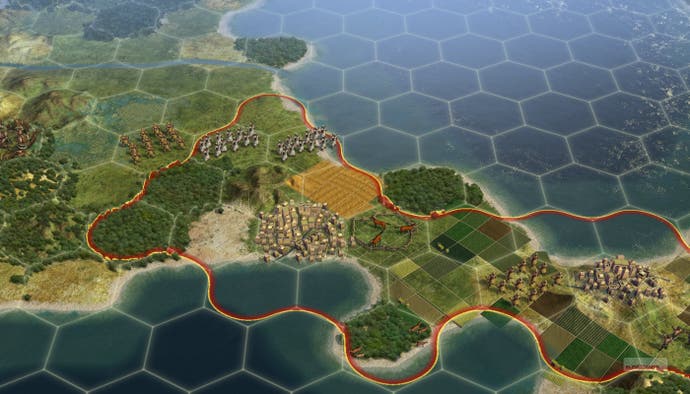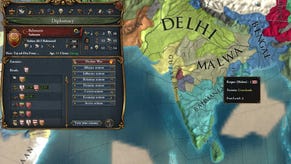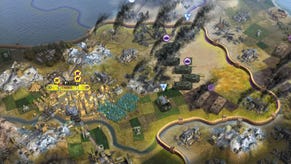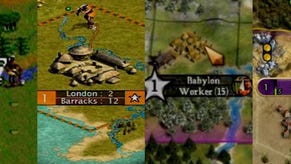Sid Meier's Civilization V
Civil reunion.
It's game-changing. Both in terms of WYSIWYG transparency and the tactics required of you. A front line backed up by ranged units, with terrain offering the usual adjustments. There's also a limitation on resources discovered in the field. Previously, if you found horses, it was a bottomless well of horses (thankfully not literally) but now you find a specific number - and once you've used them to make cavalry units, they're gone. Just as artificial, maybe, but another limitation on your war machine.
Not that Civilization is all about war - military domination is just one of the ways of winning. The othe methods - tech, culture, and so on - are still available to you, and the reasons to pursue them are more compelling.
You can't trade tech any more, but in another example of how gold takes a more upfront role, you invest in research agreements. This provides both civilisations with a research bonus to use as they see fit - not necessarily in the same area. It keeps you interested in your alliance, and saves you having to check to see if you can sell anything you've just learned to anyone else.
For a company that's all about the gameplay, there's a staggering amount of work going into Firaxis' presentation of the new leaders. No longer boxed heads - or the cartoons of Civ Rev - we now have fully modelled world leaders, roaming fully modelled rooms, speaking their own language (whether you understand it or not), with research into the body language of different cultures reflected in their animation sets.

To watch people fussing over the fibrousness of the tassles hanging from an epaulette, is to wonder whether a company is being self-indulgent - but this is another thing, like hexagons and open borders, that will quickly become an expectation rather than a waste. I've only spent a day at Firaxis, and already Civ IV feels archaic.
The new game is being written for the community, too, with an easier-than-ever map editor coaxing casuals (if there is such a thing as a casual Civ player) into the world of Civ-modding. And if you're not so inclined, a mod browser and installer has been integrated into the menu system. This is the developer's way of removing as many obstacles as possible between the less tech-savvy or simply unaware player, and excellent free content such as the complete fantasy revamp, Fall From Heaven.
Former modder Jon Schafer is unable to expand on any moderation policies for now, but is keen to point out that this is an additional service. You'll still be able to do everything the old way if you pop omnidirectional boners when manually extracting zip files.
Meanwhile, the AI is getting a new system, based on flavours. A leader has certain predispositions, towards offence, defence, recon and military training. Leaders will have favoured units, win conditions, methods of growth, and resources. They might prefer generating great people, or wonders. Queen Victoria, for example, will generally have strong flavours towards naval growth and sea-faring units. But every time you meet her, there'll be random elements in those flavours that will make her capable of surprising you: and if she finds herself land-locked, she'll adjust her priorities.

There are four layers to the computer's AI, each operating at a different level of strategy. From the Grand Strategic AI which governs which win conditions to aim for, the economic and military considerations of the Strategic AI, down to the Operational AI which moves units around, and the Tactical AI which kicks in at the combat level - to see the flowcharts as a layman is to go briefly mad with possibilities.
But something that only really struck me after watching the demonstration, taking notes and going home to have another scout around Civ IV, was the organisation of the icons on the screen. With your options aligned along the left-hand side of the screen, rather than in a blue-backed panel on the bottom with swathes of empty space around square icons. The most common use of the unit (say, Build City for Settlers) is bigger than the rest, and lesser used icons (say, delete unit) are hidden in a sub-menu.
Put simply, Civilization V is the best of both worlds: more approachable, less opaque, but still with a huge, impenetrable brain throbbing in the background. The only thing now is to play it, because it's impossible to see the changes and not want to try them out.
Sid Meier's Civilization V is due out on PC this autumn.












.png?width=291&height=164&fit=crop&quality=80&format=jpg&auto=webp)



